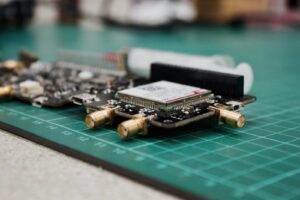Leveraging AI for Enhanced Predictive Maintenance in IoT Systems
The Role of AI in Predictive Maintenance for IoT Devices
AI for predictive maintenance in IoT is becoming a critical component of modern business operations, particularly in regions like Saudi Arabia and the UAE, where digital transformation is driving rapid adoption of IoT technologies. Predictive maintenance, powered by AI, allows businesses to monitor IoT devices in real-time, identify potential issues before they escalate, and ensure that systems operate smoothly and efficiently. By analyzing data from various sensors and devices, AI can predict when a component is likely to fail, enabling proactive maintenance that minimizes downtime and reduces repair costs.
One of the key benefits of using AI for predictive maintenance is the ability to process vast amounts of data quickly and accurately. In traditional maintenance models, issues are often addressed reactively—after they have already caused disruptions. However, with AI, businesses can transition to a proactive approach, where maintenance activities are scheduled based on actual equipment conditions rather than fixed intervals. This not only extends the lifespan of IoT devices but also improves the overall reliability of systems that are critical to business operations in cities like Riyadh and Dubai.
Moreover, AI-driven predictive maintenance reduces the risk of unexpected failures, which can be costly and disruptive. For example, in the manufacturing sector, an unplanned shutdown due to equipment failure can lead to significant financial losses. By using AI to monitor the health of machinery and predict potential issues, businesses can avoid these costly disruptions and maintain continuous operations. This capability is particularly valuable in industries such as oil and gas, logistics, and smart cities, where IoT devices play a crucial role in managing infrastructure and services.
Optimizing Maintenance Schedules with AI Insights
AI for predictive maintenance in IoT not only enhances system reliability but also optimizes maintenance schedules, making them more efficient and cost-effective. In smart cities like Dubai, where IoT devices are integrated into various aspects of urban life—from traffic management to energy distribution—ensuring these systems function optimally is essential. AI can analyze patterns in device performance, environmental conditions, and usage data to determine the optimal times for maintenance, reducing the need for frequent inspections and minimizing operational costs.
For instance, in the energy sector, AI can predict when components of a smart grid are likely to experience wear and tear based on historical data and real-time monitoring. This enables maintenance teams to replace or repair parts before they fail, ensuring uninterrupted power supply and enhancing the overall efficiency of the grid. Similarly, in transportation, AI can monitor the condition of vehicles and infrastructure, predicting issues such as tire wear or battery depletion before they become critical, thereby reducing the risk of accidents and service disruptions.
Furthermore, AI-driven predictive maintenance supports better resource allocation by identifying which assets require attention and when. This allows businesses to allocate maintenance resources more effectively, reducing labor costs and improving the efficiency of maintenance operations. In a region like Saudi Arabia, where large-scale infrastructure projects are common, optimizing maintenance through AI can lead to significant cost savings and enhance the long-term sustainability of IoT systems.
Driving Business Success with AI-Enhanced IoT Monitoring
Improving Operational Efficiency and Reducing Costs
For businesses in Saudi Arabia and the UAE, AI for predictive maintenance in IoT offers a strategic advantage by improving operational efficiency and reducing costs. By continuously monitoring IoT devices and analyzing data, AI can detect early signs of wear, performance degradation, or potential failures, allowing businesses to address issues before they impact operations. This proactive approach not only reduces downtime but also lowers the overall cost of maintenance by preventing major repairs and extending the lifespan of equipment.
In industries such as manufacturing, where machinery uptime is critical, AI-driven predictive maintenance can significantly enhance productivity. For example, by predicting when a machine component is likely to fail, businesses can schedule maintenance during planned downtime, avoiding costly interruptions to production. This approach also reduces the need for emergency repairs, which are often more expensive and time-consuming. In Riyadh and Dubai, where manufacturing and industrial activities are key economic drivers, the adoption of AI for predictive maintenance is essential for maintaining competitive advantage and ensuring continuous operations.
Additionally, AI enhances the accuracy of maintenance predictions by analyzing a wide range of data inputs, including environmental conditions, operational stress, and historical performance. This level of precision allows businesses to fine-tune their maintenance strategies, ensuring that resources are used efficiently and effectively. For entrepreneurs and business executives in the UAE, leveraging AI for predictive maintenance is not just a way to improve operational efficiency but also a means to achieve long-term business success in a rapidly evolving digital landscape.
Ensuring Long-Term Sustainability with AI-Driven IoT Solutions
The implementation of AI for predictive maintenance in IoT systems also contributes to long-term sustainability by reducing waste and optimizing the use of resources. In a world where environmental concerns are increasingly influencing business strategies, the ability to operate more sustainably is a significant competitive advantage. AI-driven predictive maintenance reduces the need for unnecessary repairs and replacements, minimizing the environmental impact of maintenance activities and extending the lifecycle of IoT devices.
In smart cities, where the efficient management of resources is crucial, AI helps ensure that infrastructure operates at peak efficiency. For instance, by predicting when HVAC systems in buildings need maintenance, AI can prevent energy waste and reduce carbon emissions, aligning with broader sustainability goals. Similarly, in water management systems, AI can monitor pumps and pipelines to detect leaks or inefficiencies, ensuring that water resources are used effectively and sustainably. This approach supports the broader goals of cities like Riyadh and Dubai to become leaders in sustainability and smart city innovation.
Moreover, AI-driven predictive maintenance aligns with the growing emphasis on circular economy principles, where the focus is on extending the lifecycle of products and minimizing waste. By ensuring that IoT devices are maintained proactively, businesses can reduce the frequency of replacements and minimize the environmental impact of their operations. For business leaders and mid-level managers in Saudi Arabia and the UAE, investing in AI for predictive maintenance is not only a smart business decision but also a commitment to sustainable growth and environmental stewardship.
Conclusion: The Strategic Importance of AI for Predictive Maintenance in IoT
AI for predictive maintenance in IoT represents a transformative approach to managing the reliability and efficiency of connected devices. By leveraging AI to monitor and analyze data in real-time, businesses in Saudi Arabia, the UAE, and beyond can transition from reactive to proactive maintenance strategies, reducing downtime, lowering costs, and enhancing overall system performance. As IoT adoption continues to grow, the importance of predictive maintenance powered by AI will only increase, providing businesses with the tools they need to stay competitive and sustainable in a rapidly changing world.
For business executives, mid-level managers, and entrepreneurs, embracing AI for predictive maintenance is not just about improving operational efficiency—it’s about driving long-term business success and ensuring that IoT systems remain resilient and reliable. As digital transformation accelerates across the region, AI-driven predictive maintenance will play a crucial role in shaping the future of business and technology, enabling organizations to thrive in the modern digital economy.
—
#AIPredictiveMaintenance #IoTDevices #SmartTechnology #DigitalTransformation #SaudiArabia #UAE #Dubai #Riyadh #BusinessSuccess #ModernTechnology #AIMonitoring #Sustainability #ProjectManagement












